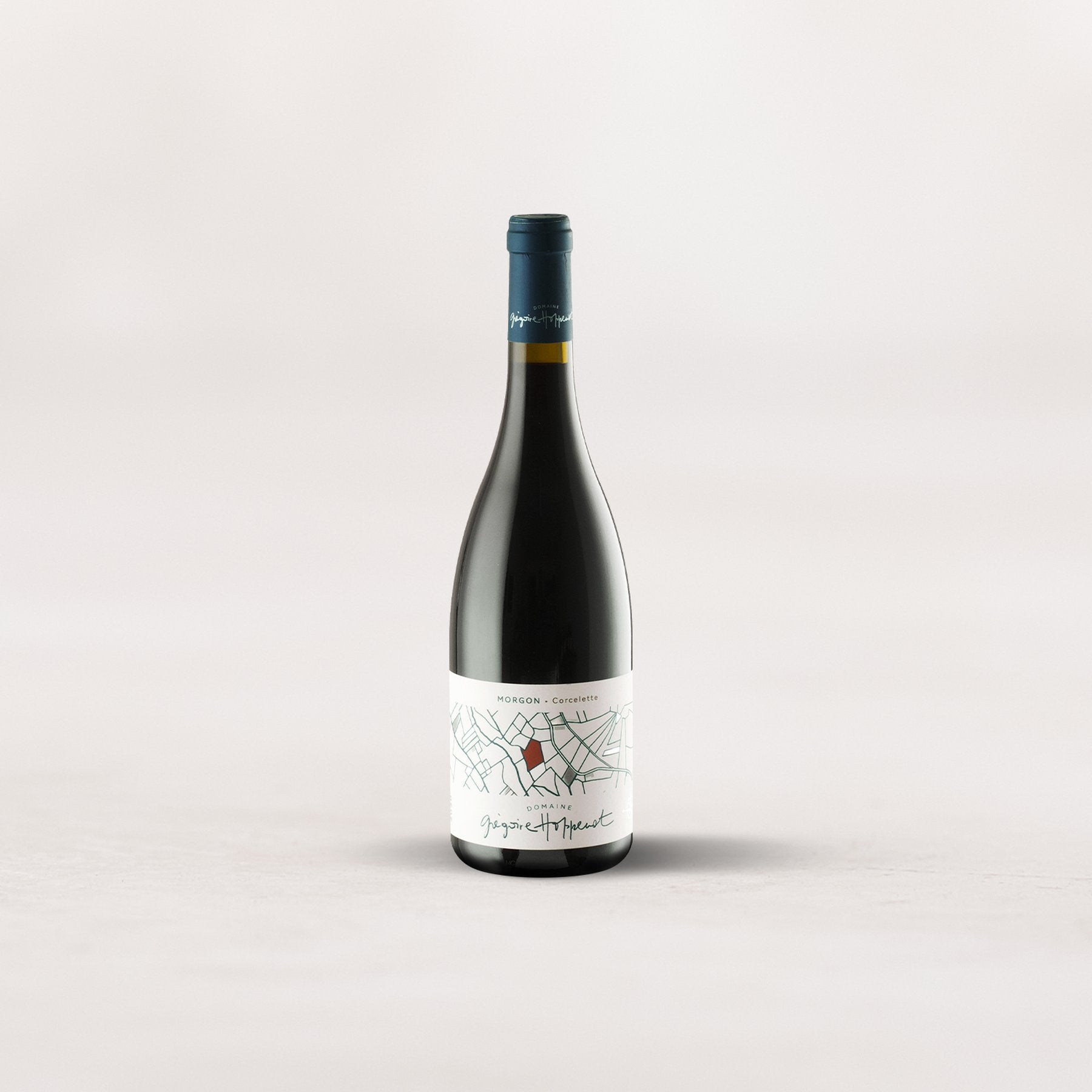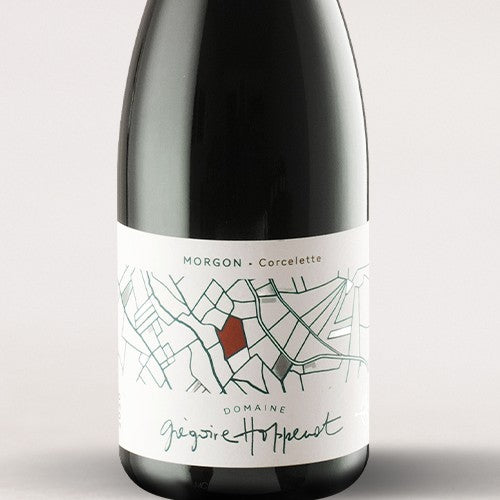It was just a few years ago that we were heralding Grégoire Hoppenot as the brightest new star in the Beaujolais firmament. Today, after repeated offerings of his pitch-perfect wines from Fleurie and Morgon, there’s no need for the “new” or “rising” qualifier—the guy’s a star, plain and simple. We’re proud to have been early Hoppenot supporters, especially when you consider the accolades he’s received, including “Discovery of the Year” by La Revue du Vin de France.
Before he returned to his Beaujolais birthplace and set up shop in Fleurie, Grégoire was a well-known consultant for Jaboulet in the Rhône Valley and several top estates in Burgundy. When it came to Cru Beaujolais wines, he assembled a focused and prestigious collection of vineyards, including some treasured old vines in Morgon’s “Corcelette,” arguably the most iconic Beaujolais cru of them all. Today’s 2020 is the third consecutive vintage of Hoppenot’s “Corcelette” we’ve offered, because, however “new” he might be to the scene, this is one of the greatest expressions of this vineyard out there. This coupling of producer and vineyard is everything a Cru Beaujolais lover could hope for: Hoppenot’s farming is Certified Organic and his methods in the cellar aim for maximum transparency, the result being a wine of profound structure, soaring aromatics, and generous fruit. This is a cornerstone wine that should be on your table as soon as possible—go deep and we’ll get it to you as fast as we can!
Having worked for many years in more of a négociant (merchant-bottler) context, Hoppenot has opted for the more peaceful, less-itinerant life of the vigneron. Not far from his homestead/winery on a ridgetop in Fleurie are some of that village’s top vineyard sites, including “Poncié,” in which Hoppenot has a monopole (sole ownership) called “Clos de l’Amandier.” His parcel in Morgon’s “Corcelette,” meanwhile, comprises less than a hectare: It is a high-elevation site (400 meters), and quite steep, or as Hoppenot himself puts it, “…a real wall.” The schist soils are littered with pieces of the granite “mother” rock, which also shows itself in larger outcroppings throughout the vineyard. Perhaps only the “Côte du Py” vineyard, also in Morgon, is a more famous site for serious, structured Cru Beaujolais.
One thing Hoppenot mentions when describing his wines is that he makes them “sans fard” (“without makeup”). I can’t resist repeating that in just about every Hoppenot offer we do. Today’s wine was fermented on ambient yeasts in concrete vats, then aged about eight months in a combination of tanks and used pièces bourguignonnes (228-liter Burgundy barrels). In the glass, the 2020 is textbook Corcelette: deep ruby-purple moving to magenta at the rim, with a complex nose of black raspberry, red and black cherry, Damson plum, damp violets, dried herbs, black pepper, and crushed stones. It is deeply flavored and medium-plus in body, with a persistent mineral/floral finish and lots of focus—the juicy fruit is framed perfectly by freshness and a firm backbone of fine-grained tannin. Right now, the wine is in a youthful, “primary” phase and will benefit from 30+ minutes in a decanter, after which it starts to really sing at 60 degrees in a Burgundy glass. Meanwhile, it is going to really hit its stride in 3-5 years’ time, so do yourself a favor and grab more than one bottle today. Among other things, this will be the most versatile red wine in your entertaining arsenal, pairing beautifully with everything from skirt steak or burgers to coq au vin and roast pork. It’s got everything I need and nothing I don’t—Cru Beaujolais at its best!








